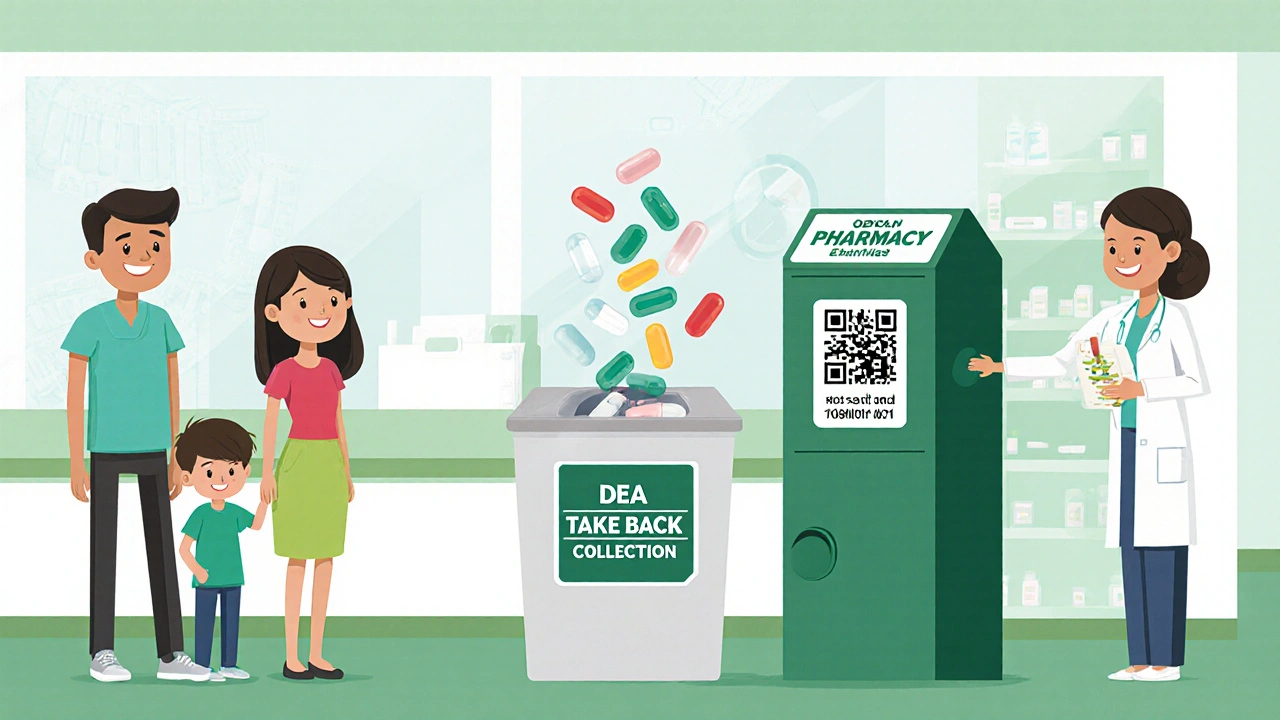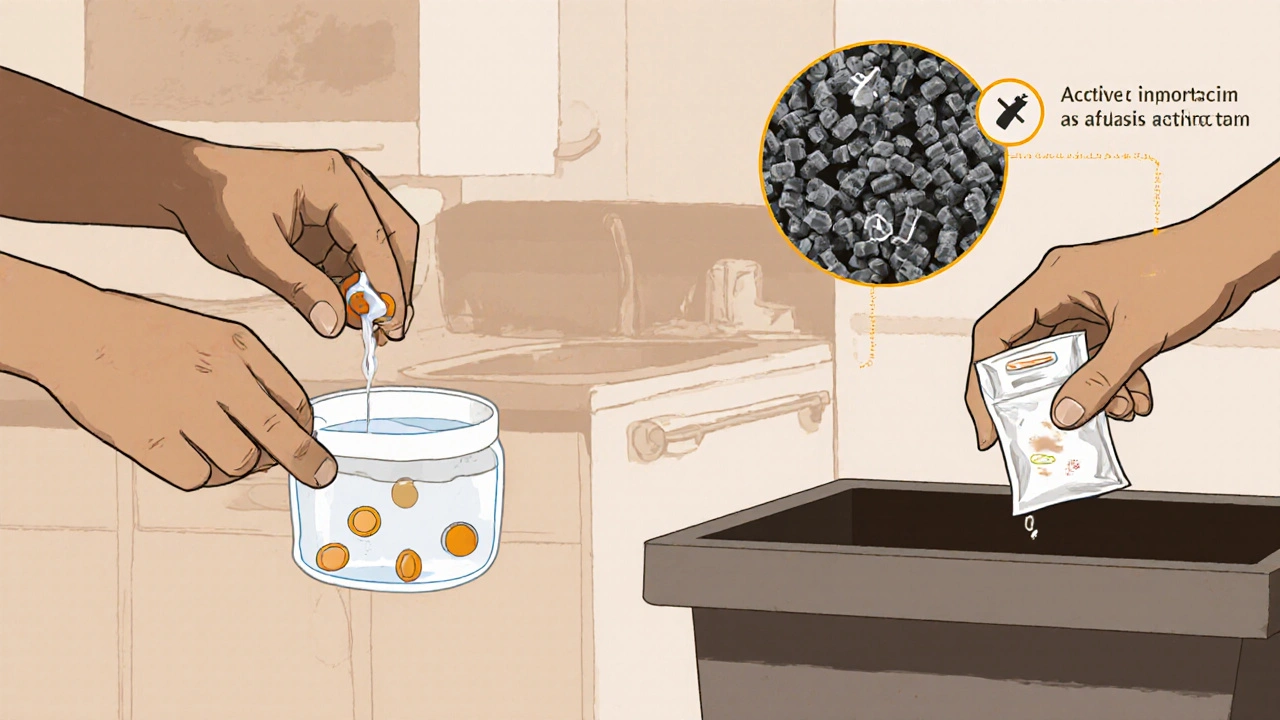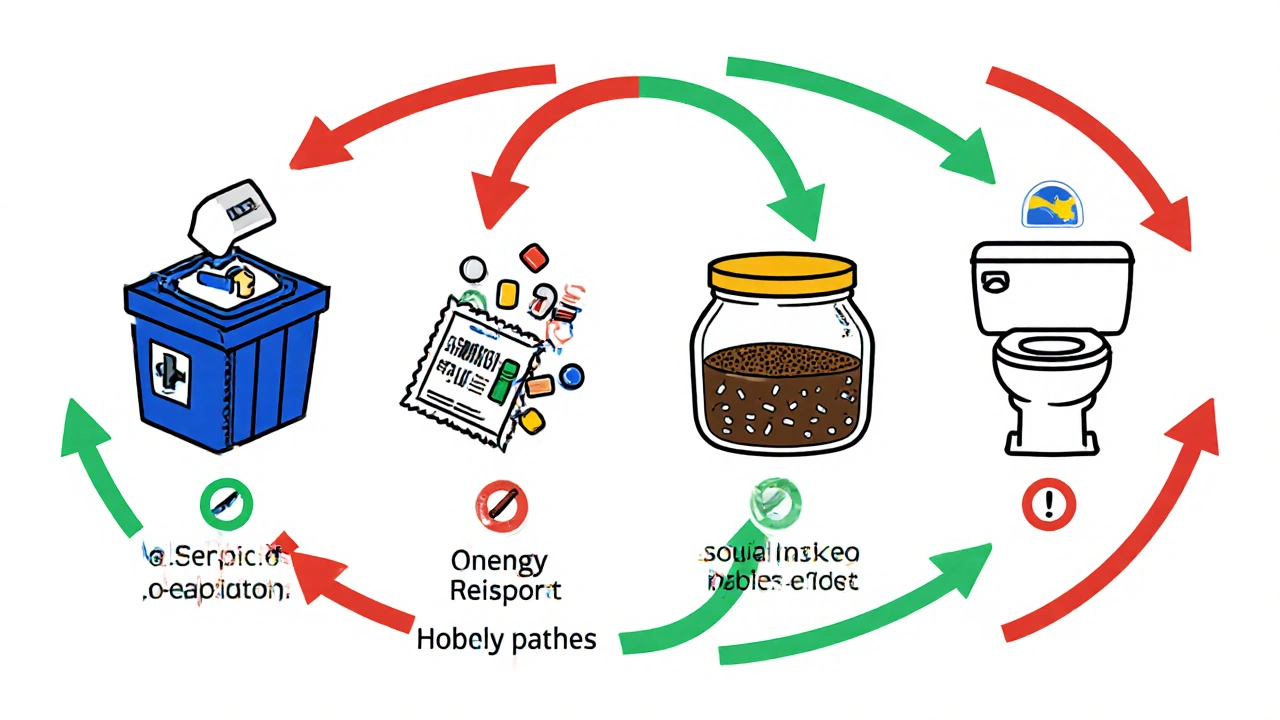How to Safely Dispose of Unused Opioids to Prevent Misuse and Overdose
 Nov, 17 2025
Nov, 17 2025
Every year, tens of thousands of people in the U.S. die from opioid overdoses-and many of those opioids weren’t bought on the street. They came from a medicine cabinet. According to the CDC, about 70% of misused prescription opioids are taken from friends or family members’ homes. If you have leftover pain pills after surgery, an injury, or a flare-up, keeping them around isn’t just risky-it’s dangerous. The good news? There are simple, proven ways to get rid of them safely. And doing it right can literally save a life.
Why Safe Disposal Matters
You might think, "I’ll just keep them in case I need them again." But unused opioids are a major source of misuse. Teens steal them. Adults take them to self-medicate anxiety or sleep. Kids find them. In 2021 alone, over 107,000 Americans died from drug overdoses, and opioids were involved in nearly 75% of those deaths. The CDC calls safe disposal a tier 1 prevention strategy-meaning it’s one of the most effective tools we have to stop overdoses before they start.Four Safe Ways to Dispose of Unused Opioids
There are four main ways to get rid of unused opioids safely. Not all are equally effective or accessible, but knowing your options helps you choose the best one for your situation.1. Use a Drug Take-Back Program
This is the gold standard. Drug take-back programs collect unused medications and destroy them through high-temperature incineration-completely eliminating the risk of misuse. As of September 2023, there are over 16,900 registered collection sites across the U.S., including:- Over 12,400 pharmacies (Walmart, Walgreens, CVS, and many independent stores)
- More than 3,200 police stations and sheriff’s offices
- Over 1,300 hospitals and clinics
2. Try a Deactivation Pouch
If you live in a rural area with no nearby drop-off sites, deactivation pouches are your best bet. These are small, biodegradable pouches you fill with water and your unused opioids. Inside, activated carbon and other compounds neutralize the drugs within 30 minutes. Brands like Deterra and SUDS are FDA-recognized and widely available. You can find them at 85% of major pharmacies, often near the pharmacy counter. They cost between $2.50 and $5 per pouch. Studies show they deactivate 99.9% of opioids. Just follow the instructions: add water, seal, shake, and throw the pouch in the trash. No need to remove pills from blister packs-just toss the whole thing in.3. Household Disposal (When Nothing Else Is Available)
If you can’t get to a take-back site or a pouch, the FDA allows a household method-but only if you do it right. Here’s how:- Remove pills from their original bottles.
- Mix them with an unappetizing substance-like used coffee grounds, cat litter, or dirt.
- Put the mixture in a sealed container-a plastic bag, jar, or empty can.
- Cover or scratch out your name and prescription info on the bottle with a permanent marker.
- Throw the sealed container in the trash.
4. Flush Only If It’s on the FDA List
Flushing opioids down the toilet sounds gross-and it is, environmentally. But for a few high-risk drugs, the FDA says it’s the safest option if you can’t use any other method. Why? Because these drugs are so potent that even one pill can kill a child or someone who doesn’t have a prescription. The FDA’s Flush List includes only 15 specific opioids. The most common ones you’ll be prescribed:- Fentanyl patches
- Oxycodone (OxyContin, Percocet)
- Morphine sulfate
- Hydromorphone (Dilaudid)
What Not to Do
Don’t make these common-and dangerous-mistakes:- Don’t just throw pills in the trash. They can be dug up and misused.
- Don’t flush anything not on the FDA list. It pollutes water and doesn’t help.
- Don’t try to dissolve pills in vinegar or bleach. That doesn’t work and can be toxic.
- Don’t keep them "just in case." If you haven’t used them in 3 months, you likely won’t.

What If You’re a Caregiver?
If you’re managing medications for an elderly parent, a child with chronic pain, or someone with a disability, disposal is even more critical. Many seniors hoard pills out of habit. Children may explore cabinets like treasure chests. A 2022 study from the University of Houston found that when caregivers received clear, visual instructions-like a laminated card showing how to use a deactivation pouch-disposal rates jumped from 22% to 67%. Keep disposal instructions next to the medicine cabinet. Make it part of the routine, like checking blood pressure or refilling prescriptions.Why So Many People Still Don’t Dispose Properly
You’d think this would be easy. But here’s what gets in the way:- Access. Rural areas have only 1.2 take-back sites per 100,000 people-compared to 4.7 in cities. That’s over 14 million Americans living more than 50 miles from a drop-off.
- Confusion. A Texas survey found 73% of patients didn’t know which drugs could be flushed or how to use pouches.
- Privacy. 27% of people worry about being judged if they bring pills to a police station.
- Forgetfulness. Only 38% of doctors routinely talk about disposal when prescribing opioids.

What’s Changing in 2025
Things are improving. The Bipartisan Safer Communities Act of 2022 gave $50 million to expand disposal access. States like California and Wyoming are using opioid settlement funds to install kiosks in pharmacies and community centers. The DEA added 1,200 new sites in 2023-many in Native American communities that had no access before. New tech is coming too. The FDA is testing QR-code-enabled deactivation pouches that track usage anonymously. Early results show a 45% increase in disposal rates where they’re used. By 2025, hospitals may be required to report disposal compliance rates as part of patient satisfaction surveys.Bottom Line: Do It Now
Unused opioids aren’t just clutter-they’re a threat. Every pill you don’t dispose of is one more chance for someone to overdose. You don’t need to be an expert. You don’t need to drive far. You just need to act.- If you have a take-back site nearby? Go today.
- If you’re in a rural area? Order a deactivation pouch online or pick one up at your pharmacy.
- If you’re stuck? Use the household method-do it right.
- If you have fentanyl patches or oxycodone? Flush them if you can’t do anything else.
Can I flush any opioid painkiller down the toilet?
No-only 15 specific opioids are on the FDA’s Flush List, including fentanyl patches, oxycodone, and morphine sulfate. Flushing other opioids pollutes water and doesn’t help prevent misuse. Always check the label or ask your pharmacist before flushing.
Are deactivation pouches safe for the environment?
Yes. Brands like Deterra and SUDS use biodegradable pouches with non-toxic compounds that neutralize opioids completely. The pouches break down safely in landfills and don’t release harmful chemicals. They’re designed to be environmentally safer than flushing or leaving pills in the trash.
What if I don’t have the original bottle?
You can still dispose of the pills safely. For take-back programs, just put them in a sealed plastic bag. For household disposal, mix them with coffee grounds or cat litter and seal them in a container. You don’t need the bottle to dispose of them properly-just make sure personal info is removed if you have it.
Can I dispose of someone else’s unused opioids?
Yes. You can drop off unused medications from family members or friends at any DEA-registered take-back site. No ID or prescription is needed. This is especially important if someone is elderly, disabled, or no longer able to manage their own medications.
Do pharmacies charge for disposal?
No. DEA-registered take-back programs are completely free. Deactivation pouches cost $2.50-$5.00 and are sold like any other product. You pay for the pouch, not the disposal service. Take-back bins at pharmacies and police stations are funded by federal and state programs.
How do I know if my medication is an opioid?
Look for names ending in -codone (like oxycodone), -morphine, -fentanyl, -hydrocodone, or -meperidine. Common brand names include OxyContin, Percocet, Vicodin, Dilaudid, and Duragesic. If you’re unsure, check the prescription label or ask your pharmacist.
What if I live in a rural area with no nearby disposal options?
Order a deactivation pouch online or ask your pharmacy to mail you one-many now offer this service. If that’s not possible, use the FDA’s household method: mix pills with coffee grounds or cat litter, seal in a container, and throw it in the trash. This is the safest option when no other method is available.
Is it safe to dispose of opioids if I have kids or pets at home?
Yes-but only if you act quickly. The most dangerous time is when the pills are still in the medicine cabinet. Once you dispose of them using a take-back program, deactivation pouch, or proper household method, the risk drops dramatically. Never leave pills unsecured. If you can’t dispose of them right away, lock them in a medicine safe.